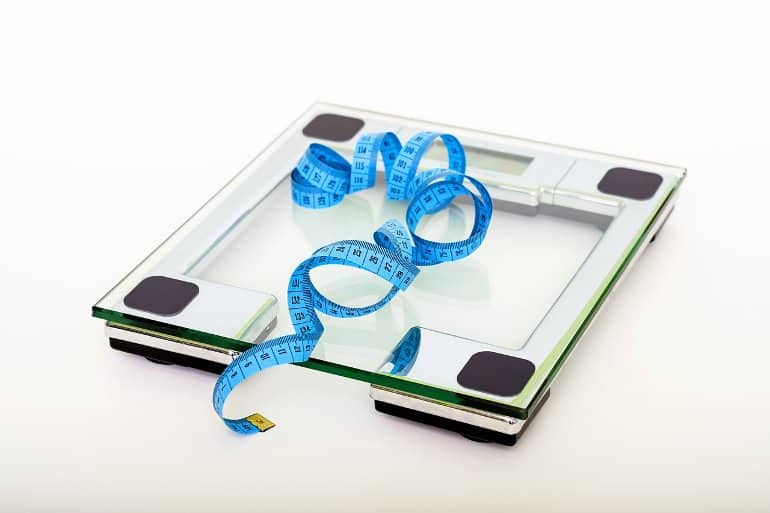Summary: Girls born to mothers with obesity may be at increased risk of becoming obese themselves, a new study reveals.
Source: The Endocrine Society
Women with obesity may share risk for the disease with their daughters, but not their sons, according to a new study published in the Endocrine Society’s Journal of Clinical Endocrinology & Metabolism.
Obesity is a common, serious and costly disease affecting nearly half of the adults and 20 percent of children in the United States. It costs an estimated $173 billion in medical care costs. People with obesity are at higher risk of developing diabetes, high blood pressure, heart issues, and many other conditions.
“These findings highlight that girls born to mothers who have obesity or have high amounts of body fat may be at higher risk of gaining excess body fat themselves,” said Rebecca J. Moon, B.M., Ph.D., M.R.C.P.C.H., of the MRC Lifecourse Epidemiology Centre, University of Southampton in Southampton, U.K.

“Further studies are needed to understand why this is happening, but our findings suggest that approaches to addressing body weight and composition should start very early in life, particularly in girls born to mothers with obesity and overweight.”
The researchers measured body fat and muscle in 240 children (9 years old or younger) and their parents in early childhood. They used this data to determine whether the body mass index (BMI)—a screening tool for overweight and obesity—and the amount of body fat and muscle in the child was related to that of their parents.
They found the girls had similar BMI and fat mass to their mothers, suggesting that girls born to mothers who have obesity or have high fat mass are at high risk of also developing obesity or overweight. The researchers did not find the same association between boys and their mothers or either girls or boys and their fathers.
The other authors of this study are Stefania D’Angelo of the University of Southampton; Christopher R. Holroyd of the University Hospital Southampton NHS Foundation Trust in Southampton, U.K.; Sarah R. Crozier of the University of Southampton and the National Institute for Health and Care Research (NIHR) Applied Research Collaboration Wessex in Southampton, U.K.; Justin H. Davies of the University of Southampton, University Hospital Southampton NHS Foundation Trust; and Keith M. Godfrey, Cyrus Cooper and Nicholas C. Harvey of the MRC Lifecourse Epidemiology Centre, the University of Southampton, the NIHR Southampton Biomedical Research Centre, and the University Hospital Southampton NHS Foundation Trust in Southampton, U.K.
Funding: The study received funding from the Medical Research Council, the British Heart Foundation, the NIHR Southampton Biomedical Research Centre, the NIHR Oxford Biomedical Research Centre, the Seventh Framework Program, the Biotechnology and Biological Sciences Research Council, the Horizon 2020 Framework Program, and the National Institute on Aging.
About this obesity and genetics research news
Author: Colleen Williams
Source: The Endocrine Society
Contact: Colleen Williams – The Endocrine Society
Image: The image is in the public domain
Original Research: Open access.
“Parent-Offspring Associations in Body Composition: Findings From the Southampton Women’s Survey Prospective Cohort Study” by Rebecca J. Moon et al. The Journal of Clinical Endocrinology & Metabolism
Abstract
Parent-Offspring Associations in Body Composition: Findings From the Southampton Women’s Survey Prospective Cohort Study
Context
Children born to parents who are overweight or obese have a high risk of adult obesity, but it is unclear if transgenerational associations relating to unfavorable body composition differ by parent.
Objective
To examine differential mother-offspring and father-offspring associations in body composition in early childhood.
Methods
A total of 240 mother-father-offspring trios from a prospective UK population-based pre-birth cohort (Southampton Women’s Survey) were included for anthropometry and dual-energy x-ray absorptiometry assessment of whole-body-less-head body composition in the offspring at 3 different ages (4, 6-7, and 8-9 years) and in the mother and father at the 8- to 9-year offspring visit. Associations were assessed using linear regression adjusting for the other parent.
Results
Positive associations between mother-daughter body mass index (BMI) and fat mass were observed at ages 6 to 7 (BMI: β = .29 SD/SD, 95% CI = .10, .48; fat mass β = .27 SD/SD, 95% CI = .05, .48) and 8 to 9 years (BMI: β = .33 SD/SD, 95% CI = .13, .54; fat mass β = .31 SD/SD, 95% CI = .12, .49), with similar associations at age 4 years but bounding the 95% CI. The mother-son, father-son, and father-daughter associations for BMI and fat mass were weaker at each of the ages studied.
Conclusion
A strong association between the fat mass of mothers and their daughters but not their sons was observed. In contrast, father-offspring body composition associations were not evident. The dimorphic parent-offspring effects suggest particular attention should be given to early prevention of unfavorable body composition in girls born to mothers with excess adiposity.







